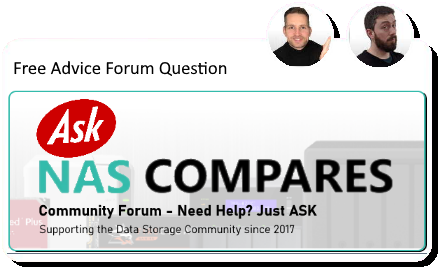06-06-2025, 12:41 PM
Thanks for the message, and it’s great to hear about your architecture studio — sounds like you're doing some pretty demanding work with CAD and rendering files.
Since you’ve been using a Synology DS216j, you’ve already had a taste of what a NAS can offer, but for six workstations and heavier file types like CAD, it makes total sense that you're looking to upgrade now.
Between a NAS and a basic server, I’d say a high-performance NAS is still the better fit for most small to mid-size creative studios like yours — especially if ease of use, reliability, and minimal maintenance are priorities. Something like the Synology DS923+ or even a QNAP TS-464 or TS-673A would be a massive step up from the DS216j. These newer models offer:
Faster access to large files,
RAID protection for drive failures,
Optional SSD caching to speed things up,
Easy user permissions for managing access,
And remote access options with built-in security.
You’d be looking at something like a 4-bay or 6-bay unit, using reliable NAS drives (like IronWolf Pro or WD Red Plus), and ideally setting it up with RAID 5 or RAID 6 for a balance of space and redundancy.
If you’re after more advanced workflows (like version control, render queue management, or running custom software in containers or VMs), then a small server might make sense — but they do require more hands-on work and upkeep. A NAS, on the other hand, is much more plug-and-play, and in your case, would likely handle everything you need without adding complexity.
Since you’ve been using a Synology DS216j, you’ve already had a taste of what a NAS can offer, but for six workstations and heavier file types like CAD, it makes total sense that you're looking to upgrade now.
Between a NAS and a basic server, I’d say a high-performance NAS is still the better fit for most small to mid-size creative studios like yours — especially if ease of use, reliability, and minimal maintenance are priorities. Something like the Synology DS923+ or even a QNAP TS-464 or TS-673A would be a massive step up from the DS216j. These newer models offer:
Faster access to large files,
RAID protection for drive failures,
Optional SSD caching to speed things up,
Easy user permissions for managing access,
And remote access options with built-in security.
You’d be looking at something like a 4-bay or 6-bay unit, using reliable NAS drives (like IronWolf Pro or WD Red Plus), and ideally setting it up with RAID 5 or RAID 6 for a balance of space and redundancy.
If you’re after more advanced workflows (like version control, render queue management, or running custom software in containers or VMs), then a small server might make sense — but they do require more hands-on work and upkeep. A NAS, on the other hand, is much more plug-and-play, and in your case, would likely handle everything you need without adding complexity.





